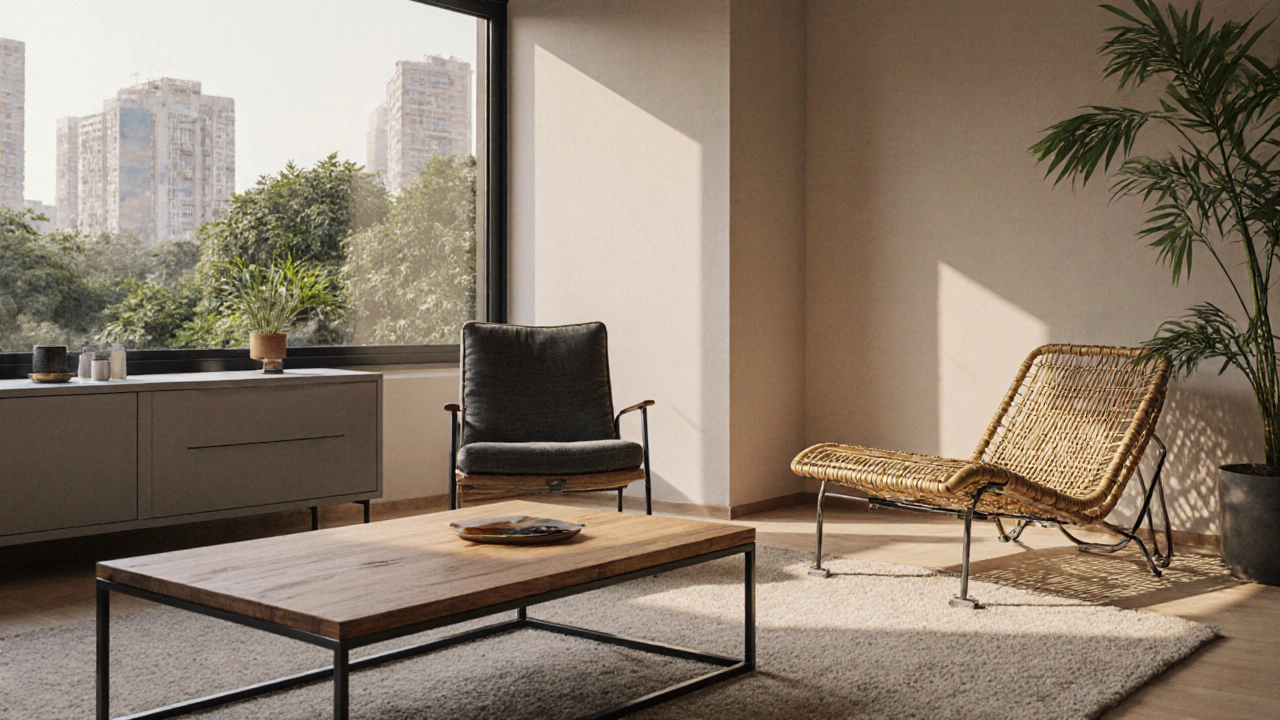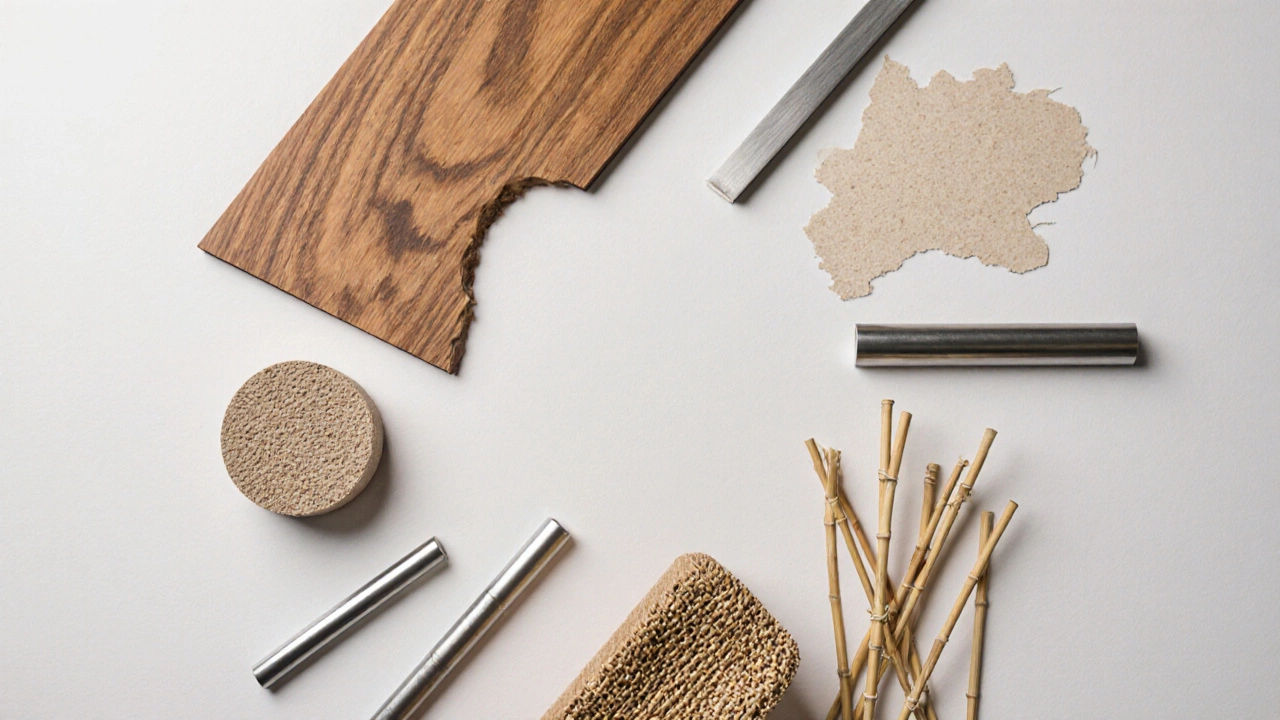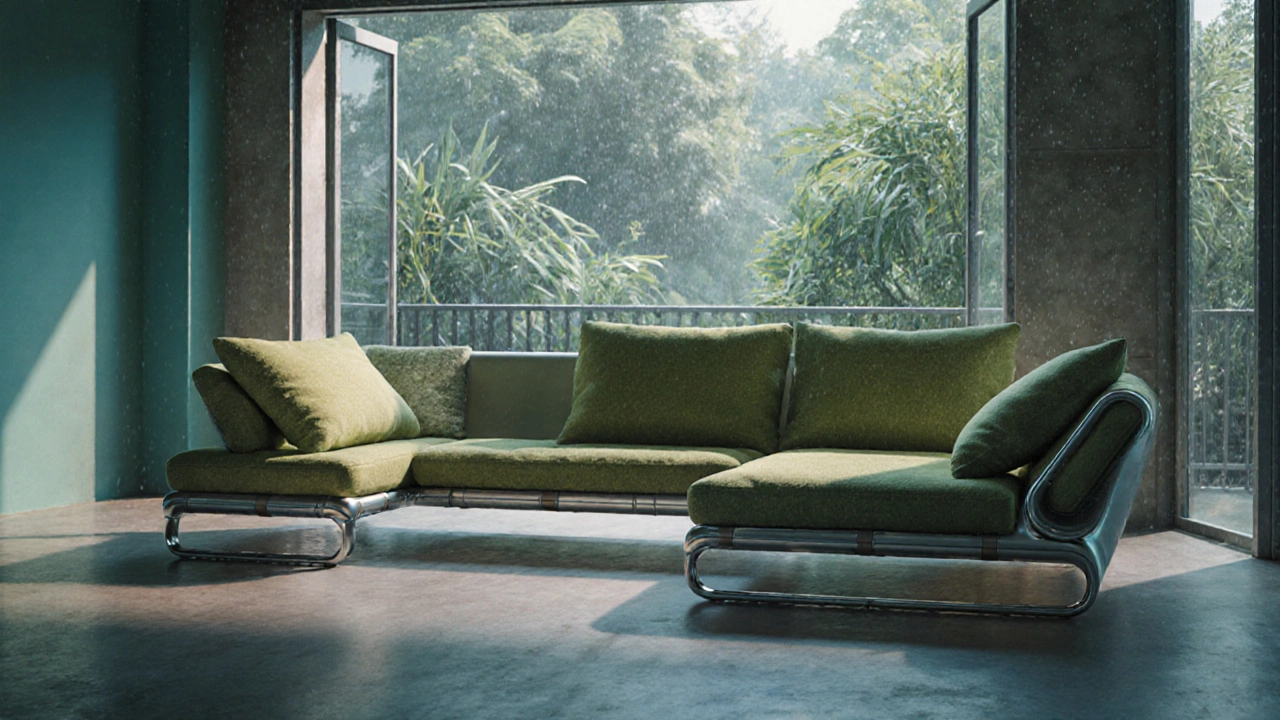
Choosing the right material for furniture in India can feel like a maze of options, price tags, and climate concerns. You want pieces that look great, last long, and won’t break the bank, especially with the hot and humid weather in many regions. This guide cuts through the noise and tells you exactly which material fits each need, backed by real‑world data from Indian manufacturers.
What makes a material right for Indian furniture?
Before we rank anything, let’s define the core criteria that matter most for Indian homes:
- Durability - Ability to withstand humidity, wear, and occasional rough handling.
- Cost - Up‑front price and long‑term value.
- Weight - Heavy pieces can be hard to move, especially in smaller apartments.
- Maintenance - How often does it need polishing, sealing, or repairs?
- Local availability - Is the material easy to source from Indian suppliers?
These five factors form the decision matrix we’ll use throughout the article.
Key material categories used by Indian furniture manufacturers
Wood is a classic choice, valued for its natural grain and versatility. Indian manufacturers often source teak, sheesham, and mango wood from domestic farms, which keeps costs reasonable and supports local economies.
MDF (Medium Density Fiberboard) is an engineered wood product made from wood fibers and resin. It’s popular for painted furniture because it offers a smooth surface and uniform strength.
Particleboard is similar to MDF but uses larger wood chips, making it cheaper but less moisture‑resistant.
Steel frames and legs give a modern, industrial look while providing excellent load‑bearing capacity.
Aluminum is lightweight, rust‑proof, and increasingly used for contemporary modular sofas.
Plastic (high‑density polyethylene, polypropylene) works well for outdoor or budget indoor pieces because it resists water and insects.
Bamboo is a fast‑growing renewable resource, offering a unique aesthetic and good tensile strength.
Rattan (often blended with synthetic fibers) gives a tropical vibe, suitable for lounge chairs and low‑profile tables.
Comparing the top materials
| Material | Durability (1‑5) | Average Cost (₹ per sq.ft.) | Weight (kg per cu.m.) | Best For | Maintenance |
|---|---|---|---|---|---|
| Solid Wood (Teak, Sheesham) | 5 | 150‑250 | 600‑800 | Classic living‑room sets, heirloom pieces | Oil or wax every 6‑12 months |
| MDF | 3 | 80‑120 | 700‑900 | Painted cabinets, flat‑panel furniture | Wipe with dry cloth; avoid water |
| Particleboard | 2 | 50‑80 | 500‑650 | Budget bedroom sets, flat‑pack items | Limited; avoid moisture |
| Steel | 5 | 120‑180 | 7850 | Office desks, industrial style tables | Wipe with damp cloth; occasional rust check |
| Aluminum | 4 | 140‑200 | 2700 | Modular sofas, lightweight frames | Soap & water; no polishing needed |
| Plastic (HDPE/PP) | 3 | 40‑70 | 950‑1100 | Outdoor chairs, children's furniture | Simple wash |
| Bamboo | 4 | 90‑130 | 600‑850 | Eco‑friendly living‑room sets, décor | Oil annually; keep dry |
| Rattan (Natural) | 3 | 70‑100 | 550‑750 | Patio lounge chairs, coffee tables | Cover in humid months; occasional polishing |

How to pick the right material for your space
Use the decision matrix below to narrow down options based on your specific scenario.
- High‑traffic living rooms: Choose solid wood or steel. Both score 5 on durability and can handle heavy use.
- Small apartments with limited carrying capacity: Go for aluminum or bamboo. Their lower weight makes moving easier without sacrificing strength.
- Budget‑focused college dorms: Particleboard or plastic provide the cheapest entry point, but keep them away from bathrooms to avoid swelling.
- Outdoor patios in monsoon‑prone zones: Opt for UV‑stabilized plastic, treated steel, or synthetic rattan. Real rattan will warp quickly.
- Eco‑conscious homeowners: Bamboo, reclaimed wood, or FSC‑certified solid wood align with sustainability goals.
By matching your environment and budget to the matrix, you eliminate guesswork and end up with furniture that feels right for years.
Common pitfalls and how to avoid them
- Ignoring humidity: In coastal cities like Mumbai or Kolkata, moisture can swell MDF and particleboard. Seal edges with waterproof varnish or choose solid wood.
- Chasing low price at any cost: Very cheap plastic may crack under load. Look for density ratings (HDPE ≥ 0.95 g/cc) before buying.
- Skipping certifications: For wood, check the Forest Stewardship Council (FSC) label. It guarantees legal sourcing and reduces the risk of termites.
- Neglecting maintenance: Steel looks sleek until rust appears. Apply a rust‑inhibiting primer if the piece will be near a kitchen’s steam.

Maintenance tips to extend lifespan
Each material has a simple care routine that can add years to its life:
- Solid wood: Dust with a soft cloth, oil quarterly, avoid direct sunlight.
- MDF/Particleboard: Use coasters, keep water away, tighten screws annually.
- Steel: Wipe with a slightly damp cloth, dry immediately, re‑apply protective coating every 2‑3 years.
- Aluminum: Mild detergent and water; no polishing needed.
- Plastic: Hose down with water and mild soap; store indoors during extreme heat.
- Bamboo: Light oil spray, keep in shade, avoid soaking.
- Rattan: Cover during monsoon, use a soft brush for dust.
Future trends in Indian furniture material market
Manufacturers are experimenting with hybrid composites-mixing bamboo fibers with recycled plastic-to achieve strength without compromising sustainability. Expect to see more “green” collections from major Indian brands after 2025, especially as government incentives for eco‑friendly production ramp up.
Which material is most durable for Indian indoor furniture?
Solid wood (especially teak and sheesham) and steel score the highest on durability, handling humidity, heavy use, and wear without significant degradation.
Is MDF suitable for humid climates?
MDF can be used, but only if edges are sealed with moisture‑proof veneer or lacquer. Unsealed MDF will swell and lose structural integrity in high humidity.
What is the most budget‑friendly material that still looks good?
Particleboard painted with a high‑quality finish offers a sleek look at the lowest cost, ideal for budget bedroom sets where heavy wear isn’t expected.
Can I mix metal and wood in the same piece?
Yes, many modern designs combine steel frames with solid‑wood tops. This hybrid approach gives strength, reduces weight, and adds a contemporary aesthetic.
How often should I oil bamboo furniture?
Apply a light coat of natural oil once a year, preferably after cleaning and drying the surface. This maintains the sheen and prevents cracking.